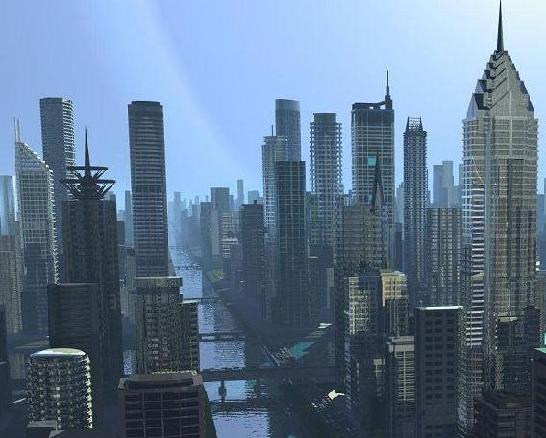Sparta
Information Issued by the Super Roman Ministry of Culture and Education
Sparta
Alexander the Great, the first Roman Imperator, founded Sparta in 156BC. It was the first Roman city built under the rule of the Imperator and soon became the showpiece of the Empire. Sparta was erected with the purpose of forming the first governing city within Roma. Sparta was to become the hub of all pioneering commercial, industrial and residential development. Government and the Judiciary were to be based in the Capital as well as the Imperator himself. Sparta has thrived as a city since its construction and was the first Roman city to achieve a population of over a million citizens.
Sparta today is a sprawling metropolis home to most notably the Libra Maxima, the largest library in Super Rome, housing over 2.5 million books, including the Super Roman constitution and the Spartan Treaties, the Imperial Palace, The Imperial Senate House, The Great Forum and the University of the Sophists. Its population stands at an estimated 17.9 million people and is increasing daily. For this reason Sparta has expanded horizontally as well as vertically
The North of the City is primarily commercial and business based, with multiple skyscrapers filling the skyline. The North is generally the home of the wealthier citizens of Super Rome and often receives the highest levels of FDI. The North, being the commercial centre of Super Rome has access to the most effective transport links. The Bullet Train stations are frequent and provide rapid transportation for commuters. The North also features, trams, monorails, subways, motorways and extensive public transportation routes. The North is also home to the major corporations of Super Rome: Super Sprunk, Super Rome's premier soda producer, Mombassa Motors and Monbatsu Autos and most significantly RomTech, the largest electrical retailer. Many other firms such as: Munch, the largest snack outlet, Oversons, the food supermarket giant and Roman Electric, the main power provider in Super Rome all house their headquarters in the Northern quadrant.
The South of the City is far more industrial. Due to strict environmental laws all manufacturers and industrialists have to conform to an air equality act, issued by the government, This prevent excess emissions entering the air above Sparta, thus protecting this sector from environmental damage. Here many large firms are in operation such as ROPEC the major oil manufacturer and Romasons, the main smelting and metalworking firm in Super Rome. The industrial sector is home to many lower altitude buildings; many have chosen to operate underground to further reduce environmental damage. The same transport links exist in the South bar the inclusion of monorails. Rapid Industrialisation of this sector during the stalemate of the Cold War has prevented the construction of monorail systems, as there simply is not enough available land to occupy.
The Western Sector is primarily residential. Blocks of high wealth residential flats and apartments dominate the skyline and their scope rivals that of the skyscrapers in the Commercial sector. The West is home to various bars and restaurants, including the infamous Cantina, renowned for its "Solo" soup and organic "Organa" style food. The two have been made famous by their exquisite combination. Such quality has only been matched with the prestigious Smiths restaurant in the Trinity District and its Neo-Nuevo cuisine. Nightlife here is diverse with clubs such as: Club Hell, Oh the City Hotel, Club 402 and the Pyramid Floor. The West is also home to many smaller retailers, outlets and markets. However the dominant feature of the Western quadrant is the Super Mall in Priestlands Park. The mall is home to over 750 individual retailers and has a car storage facility of over one million vehicles. It is also home to four cinemas, over 100 restaurants and bars, a supermarket, sports facilities and bowling alleys.
The Eastern Quadrant of Super Rome is by far the most presigeous and beautiful. It is home to all official buildings such as the Imperial Senate, Libra Magna, The War Ministry, Great Forum, Great Basilica and most significantly the Imperial Palace. The Eastern sector houses a majority of Super Rome's museums, Galleries, Libraries and Parks. Planning Permission is a requisite to all new developments and is monitored closely. Buildings must remain at an acceptable level as to not overtop the Imperial Palace and must not be so large as to disturb the ecology of the local area. The East is a sanctuary within the hustle of Sparta, many come to the East for breaks and is the main centre of tourism in all of Super Rome. The wildlife reserve is key to the survival of some of the most rare indigenous wildlife in all of Super Rome and thus pollution quotas are in force throughout the sector.
Sparta attracts nearly over 7 million tourists a year and caters for those of all creeds, religions and ethnicities. The Roman ruins of ancient times are of particular interest to most and the Imperial Palace is regarded as one of the four wonders of the ancient world. The Metropolis of Sparta has existed for nearly over two and a half thousand years and has become one of the largest centres of commerce in the Alliance. The City is governed by the Imperator himself and is the scene of many processions and official functions. The Capital serves as the hub of the Super Roman Space Core and all other departments of the military.



